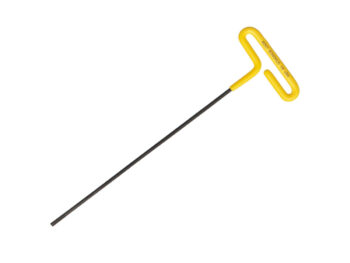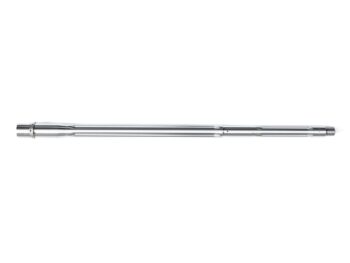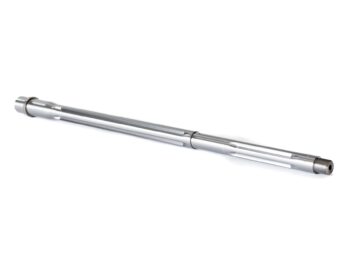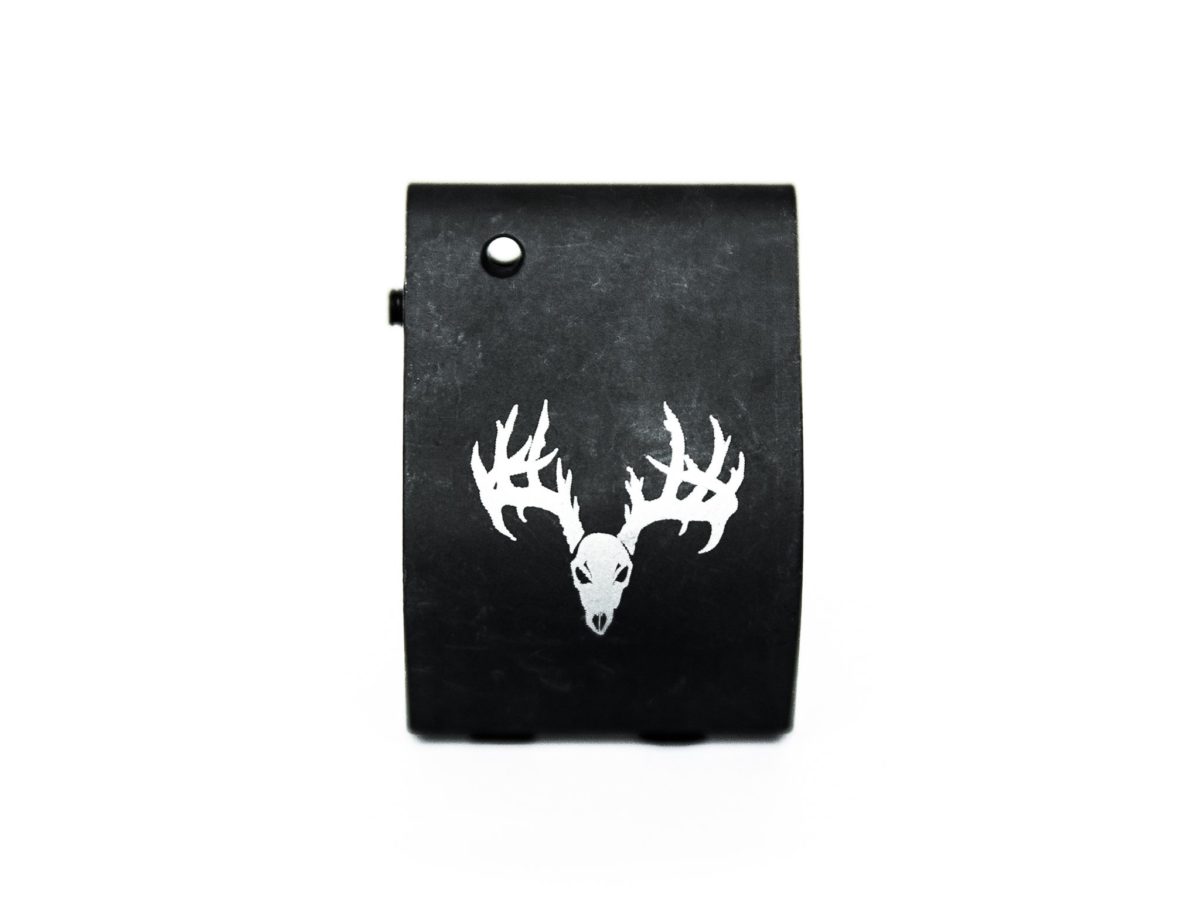The Grendel Hunter Adjustable Gas Block is a simple, rugged, low profile design. They are designed to fit under most handguards. The adjustable gas block features a fine thread adjustment screw used to adjust gas flow and tailor extraction and ejection to different loads or suppressors. The adjustment screw is locked into position with a set screw. Made of carbon steel.
Adjustment Instructions
Before installing the gas block, we recommend taking a minute to look at how it works. Start by loosening the locking (front) screw a turn. Now, if you begin with the adjustment (side) screw turned all of the way in, you can see that it is completely covering the gas port hole. Only an extremely small amount of gas (making it through the threads) is not being blocked at this point. If you fire the rifle with this setting, you’ll likely see your rifle lock up. The bolt won’t rotate, the carrier won’t travel rewards and the spent case will stay stuck in the chamber. As you begin to adjust the screw out, you’ll first begin to see it open up at about ¼ of a turn. From here, you have about 3 ½ additional turns to reach full open. There is no need to go past 4 turns from the fully closed position.
When choosing an initial gas setting to try, you probably don’t want to start with it fully closed. Knowing that the rifle can’t function without at least some gas, it’s usually a waste the time and ammo on that setting. If your rifle is over gassed by a decent amount, as is usually the case when using a suppressor, try starting with a setting of ½ of a turn from fully closed. If your rifle is only mildly over gassed, you may want to try a setting of 1 ½ turns from fully closed. From your initial setting you can make adjustments in (less gas) or out (more gas) as the situation dictates. Small adjustments of ¼ of a turn of less are recommended to fine tune the block.
Things to Look For
- Cycling – The rifle should fire, extract and eject the spent case and then strip and load a new round from the magazine. If the rifle is extracting the spent case, but it doesn’t eject it and tries to load a new round causing a jam, this is usually a sign of over gassing. The bolt is flying back forward and trying to load another round before the spent case has cleared the ejection port*. You may see what’s called a stove pipe where the spent brass is sticking partially out of the ejection port looking kind of like a stove pipe coming out the roof of a house. In this case, you’re going to want to turn the gas down a bit. If the rifle is extracting, but not ejecting or trying to load another round, it’s going to need some more gas. If the BCG is making it through extraction and ejection, but not picking up the next round, it’s going to need some more gas. These last two examples are usually signs of a short stroke**. A short stroke is usually a sign of not having enough gas for the BCG to make it far enough to the rear***.
- Locking Back – The BCG should lock to the rear on an empty mag after firing the last round. If the rifle is cycling fine, but goes back into battery after ejecting the last round rather than locking to the rear, this is also usually a sign of a short stroke. The BCG makes it back far enough to strip rounds from the magazine, but not far enough to lock open. If your BCG is locking back after the last round, you should still check to see that the bolt itself is engaged with the bolt catch. When a rifle is just barely under gassed, it is not uncommon to see the bolt catch engage with the front of the carrier rather than the bolt. The BCG didn’t quite make it back far enough for the bolt catch to block the bolt, but it will catch on the front of the carrier. An easy way to tell is to look at the bolt when the BCG is locked open. If the bolt itself is protruding out over the magazine a little bit, the catch caught the carrier and it needs just a touch more gas.
- Brass Ejection Pattern – The ejection pattern of brass is not a perfect way to determine if or by how much an AR is over or under gassed. Other factors such as the buffer system, ejector, extractor etc can come into play. However, let’s assume that all other things are normal because ejection patterns can be a very useful tool, especially for fine tuning your gun. If you’ve gone through the above bullet points and your rifle is cycling and locking back properly, then look at where your brass is landing. If your brass is landing somewhere near 4 o’clock, you probably have a perfectly tuned rifle. If your brass is landing at 2 o’clock (forward a little bit), then you are probably still a little bit over gassed.
*Something else that can cause this exact same malfunction is an extractor hanging on to the spent brass longer than it should. Three reasons this might occur: 1. The extractor has too much tension on it. 2. The extractor is digging into the brass excessively possibly due to it being too sharp or pointy. 3. Overly soft brass. In any case, even a properly gassed gun can present as one that is over gassed if there’s a problem with the extractor letting go of the brass.
**In cases of extreme over gassing or a rifle running way too fast for the magazine, the bolt may move all the way back extracting and ejecting the spent case and then begin moving forward before the next round is lifted into place. What looks like a short stroke can actually be a bad magazine or an over gassed gun.
***Things other than insufficient gas can cause a BCG to not travel all the way to the rear (short stroke). For example, some aftermarket bolt catches make contact with some aftermarket uppers and don’t fully disengage. Since the bolt catch is partially engaged, it is rubbing on the BCG when cycling thus wasting some of the energy and causing it to short stroke. Another example is that of a magazine being held slightly too high in the lower. Whether due to the lower’s magazine catch area being milled slightly too high or the magazine being bad, the result is the same. Extra pressure on the bottom of the carrier while cycling wastes energy. A buffer spring that is too stiff or ammo that is too light can give you the same result: A short stroke.
Click here to browse our other Gas Blocks and Tubes.















Sean (verified owner) –
Nice adjustable gas block that works as advertised. Had a small issue with the first one but they sent me another without question. Grendel hunter is a good company and I will purchase again from them.
Christopher S Foster (verified owner) –
Great adjustable gas block, don’t let the price fool you that your getting a cheap P.O.S. It installs great, every thing about it works as it should. This is my second block that I’m running, I have them on both my AR’s. Just don’t forget to loosen the set screw before trying to adjust your gas, it strips out faster than you think. But that was my fault, not the quality of the block. I will be making more purchases in the future.
Bob (verified owner) –
fit is great, adjustment is easy to get to, and the price is what a normal gas block would run minus the feature of adjusting